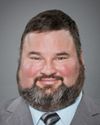Thank you for your presentations and for providing details on obesity among aboriginal peoples. It was very informative. We take note of the problem. I believe you have a very good grasp of what is happening in each of these communities.
We are not sure what needs to be done exactly in order to take care of each community. You have not really proposed a direction for the government to take nor suggested a particular type of leadership. You speak of a global plan but it is not clear to me how the government can play a proactive role to better support you.
The problems have been clearly identified. Some programs lack longitudinal studies but what do we need to do? Until now, you have not seemed concerned by existing program issues.
Do you want the government to play a proactive role in implementing certain programs to address the problem of obesity among Aboriginals? I wonder if someone can speak to this issue. Ms. Lafontaine seems to be saying that the government should have a global plan and that more numbers are required. I would like someone to clarify this a little. You need to provide clearer ideas on what the global plan should be along with your presentation of the report.




